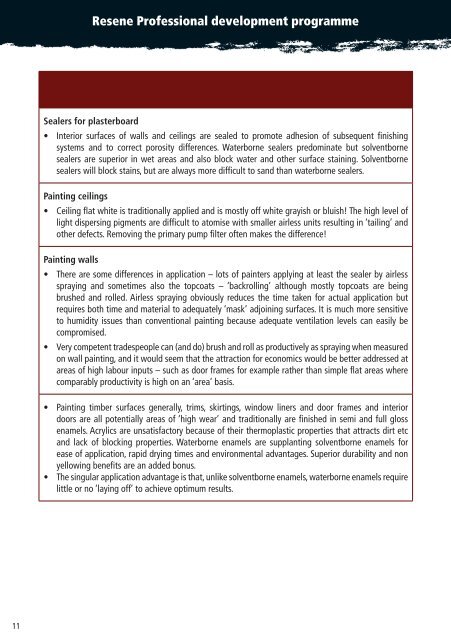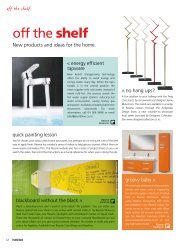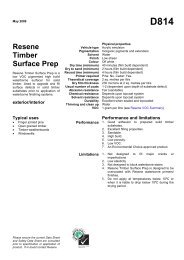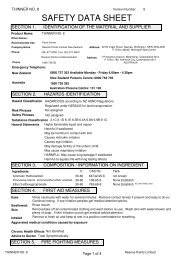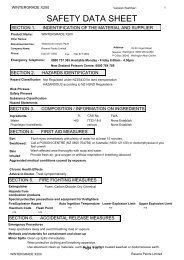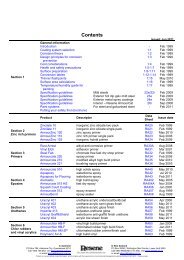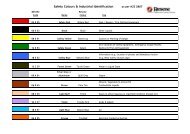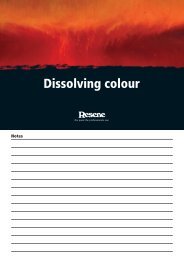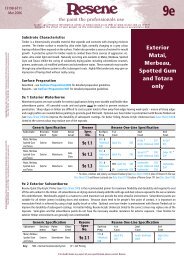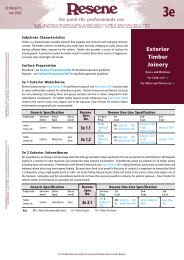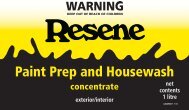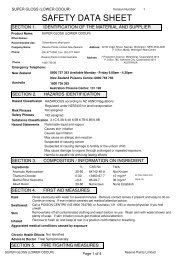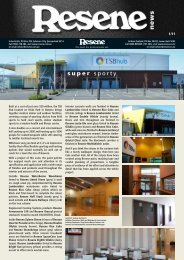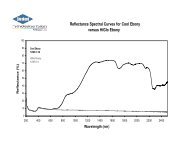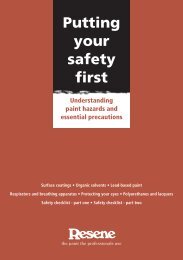Create successful ePaper yourself
Turn your PDF publications into a flip-book with our unique Google optimized e-Paper software.
<strong>Resene</strong> Professional development programmeSealers <strong>for</strong> plasterboard• Interior surfaces of walls and ceilings are sealed to promote adhesion of subsequent finishingsystems and to correct porosity differences. Waterborne sealers predominate but solventbornesealers are superior in wet areas and also block water and other surface staining. Solventbornesealers will block stains, but are always more difficult to sand than waterborne sealers.Painting ceilings• Ceiling flat white is traditionally applied and is mostly off white grayish or bluish! The high level oflight dispersing pigments are difficult to atomise with smaller airless units resulting in ‘tailing’ andother defects. Removing the primary pump filter often makes the difference!Painting walls• There are some differences in application – lots of painters applying at least the sealer by airlessspraying and sometimes also the topcoats – ‘backrolling’ although mostly topcoats are beingbrushed and rolled. Airless spraying obviously reduces the time taken <strong>for</strong> actual application butrequires both time and material to adequately ‘mask’ adjoining surfaces. It is much more sensitiveto humidity issues than conventional <strong>painting</strong> because adequate ventilation levels can easily becompromised.• Very competent tradespeople can (and do) brush and roll as productively as spraying when measuredon wall <strong>painting</strong>, and it would seem that the attraction <strong>for</strong> economics would be better addressed atareas of high labour inputs – such as door frames <strong>for</strong> example rather than simple flat areas wherecomparably productivity is high on an ‘area’ basis.• Painting timber surfaces generally, trims, skirtings, window liners and door frames and interiordoors are all potentially areas of ‘high wear’ and traditionally are finished in semi and full glossenamels. Acrylics are unsatisfactory because of their thermoplastic properties that attracts dirt etcand lack of blocking properties. Waterborne enamels are supplanting solventborne enamels <strong>for</strong>ease of application, rapid drying times and environmental advantages. Superior durability and nonyellowing benefits are an added bonus.• The singular application advantage is that, unlike solventborne enamels, waterborne enamels requirelittle or no ‘laying off’ to achieve optimum results.11


